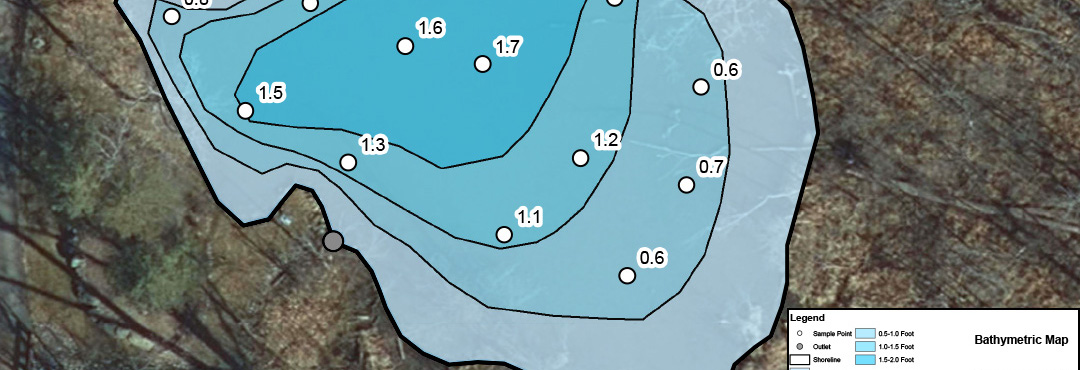What is Bathymetric and Sediment Mapping and Why is it Important?
Bathymetric mapping is used to chart the underwater surface of a waterbody. Mapping the bed of a waterbody allows us to calculate the volume of water in a lake or pond. Bathymetric mapping is critical for making informed management decisions, including identifying features that provide good wildlife habitat, and understanding how a lake is changing over time.
In addition to bathymetric mapping, sediment surveys are recommended in lakes and ponds that are experiencing water quality concerns. Soil naturally erodes into lakes and streams over time, and the rate of erosion can increase if the surrounding bank is not stabilized. This material can accumulate in a waterbody, leading to “muck” and negative impacts on water quality. Sediment mapping surveys determine where sediment is accumulating and the thickness of sediment to calculate the volume of sediment that has accumulated over time and to find opportunities for sediment removal. In particular, stormwater ponds are designed to settle out sediment in rainwater and have a designed “lifespan” wherein they fill up with sediment and need to be dredged to reset the pond. If a stormwater pond is over 20 years old and has been experiencing increasing levels of nuisance aquatic vegetation and algae, that could indicate that the pond has accumulated the amount of sediment it is designed to hold and needs to be dredged.
Establishing a baseline depth for a lake or pond through bathymetric mapping and doing a sediment mapping survey every 5-10 years can help a community understand the rate of sediment accumulation in their lake and prepare for the potential need for dredging.
How are Bathymetric and Sediments Maps Made?
Integrated GPS equipment and sediment measurement tools are used to accurately evaluate water depth and sediment thickness. Water depth is established as the distance from the lake surface to the top of the sediment. Sediment thickness is the distance between the top of the sediment to the hard-pack, or “consolidated” bottom. These data points are imported and analyzed with mapping software to create detailed maps that show depth contours and calculate water and sediment volume. This information is crucial to understanding how your water body is changing over time and helps provide the best management solutions to improve and maintain the health of your water resource.
Contact Us Today to Learn More About Mapping
Interested in more information about Integrated Lakes Management’s mapping services or looking for holistic strategies to care for your environment? Contact us today! We are happy to help you improve the beauty and health of your lake, pond, wetland, woodland, or prairie.

